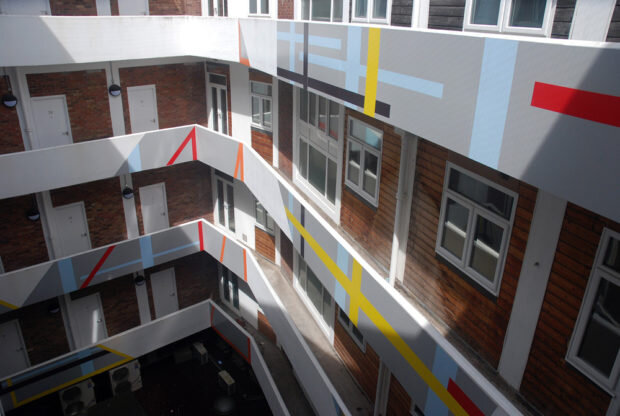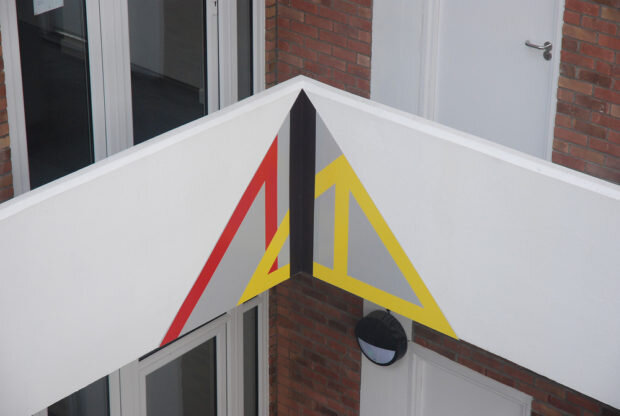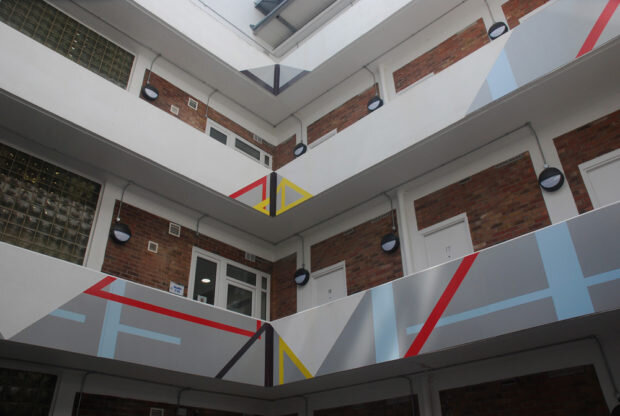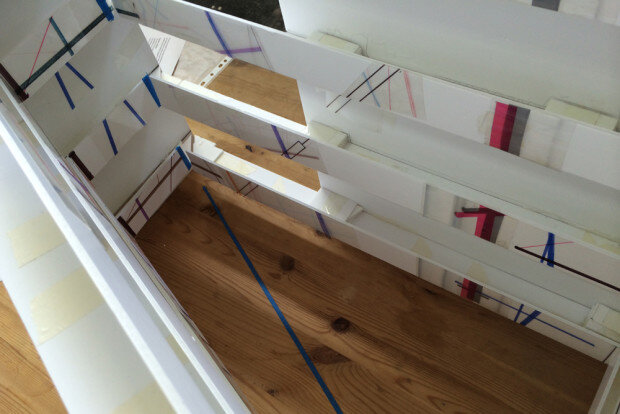Colston Avenue
Artist: Will Rounce
Client: Urban Creations
Rounce’s intervention relates to the dimensions and proportions of the space they are created within, with a close interdependence with the architectural features of a given site. His work occupies a space between drawing and architecture, where issues of formalism such as shape, colour, line, surface and form are examined.
For the Colston Avenue work, Rounce worked within a set of parameters closely aligned and calibrated around the physical proportions of the building's main internal courtyard. The artwork – which can be seen from multiple viewpoints - alters the perception of space, perspective and illusion, and its constituent elements converge to create imaginary planes that connect the balconies together. With its shifting perspectives the artwork reveals itself gradually, allowing residents to experience the space in a new and unfamiliar way.
The balconies are a key feature of the site’s architecture and have a dual purpose. Firstly, as a transient space, but also as an area for students and residents to reflect and socialise. The artwork seeks to create a sense of community and cohesion as the viewer becomes an active participant of the work.
‘The negotiation between the artwork and its setting is a relationship whereby the artwork both activates and is activated by the surrounding space’ Jack Brindley, There are two types of clarity, Apiary Studios (2011).
Through reflection and the push and pull of colour, there is a constant play between both the illusionistic and physical space. Spatial relationships are created between the positive and negative space of the design. Using a warm colour palette, bands of diagonal and horizontal colour ascend and descend across the full height of the balconies. Horizontal strips of colour transverse and wrap around the internal atrium, connecting and redefining the shape and proportions of the space.





